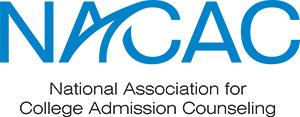The world of admissions is perceived to be a competition, and hyper-selective schools are perceived to be the prize. That’s why the U.S. News and World Report rankings have gotten attention – a list showcasing those top prizes and essentially devaluing those not present on that list. For a really great take on this idea, check out my colleague Arun’s video here. Rather than give this ranking list more attention, I want to spend a bit of time highlighting some rankings that aren’t given the recognition they deserve.
First, let’s talk through a concept that might come up in a couple of these ranking systems. Social mobility, sometimes referred to as economic mobility, is defined by the ability of an individual to move from one socioeconomic group into another. When referring to social mobility in the educational context, we’re referring to the ability of an institution to create social mobility for its students.
Why are these terms important? They all go back to the idea of these ranking systems noting the opportunity and access for students to go from one socioeconomic bracket to another. Success isn’t just about the prestige – it’s about the ability for a student to not only find a place to start their future, but not be overwhelmed by indebtedness that prevents them from moving between those brackets.
The first ranking system I’ll talk about is the Social Mobility Index. The SMI is very intentional about what they do include as a factor in ranking, but also about what they don’t include. Compared to the U.S. News and World Report Rankings, SMI doesn’t take into account average SAT or ACT scores, noting that those scores could be a “counter indicator,” as they may serve to keep more students out rather than to give more opportunity to students. Selectivity doesn’t equal opportunity according to the SMI, which is why I really appreciate this system. SMI uses tiers to calculate their SMI rankings: access, outcome, and institutional capability. Notable schools in the top rankings are schools in the City University of New York (CUNY) and California State University public university systems.
Let’s take #1, CUNY Bernard M Baruch College, otherwise known as Baruch College. 41.6% of their students are low-income – but another factor SMI takes into account is the median starting salary for graduates, which sits at $57,200. Among other factors, this floats them to the top of the index for their ability to provide opportunity to students. If you’re interested in nerding out over the data like I was, you can read more about SMI’s methodology here.
The second ranking system I’ll talk about is Washington Monthly’s National University Rankings. This ranking system was developed as a direct response to the U.S. News and World Report Rankings. Their rankings are calculated a bit differently than SMI’s, in that they include three factors that are weighted equally: social mobility, research, and community service. Within Washington Monthly’s social mobility calculation is 8-year graduation rate, affordability, and number of Pell Grant recipients, among other factors. Their methodology describes exactly the percentage at which each of these factors are taken into account, and you can read more about that here.
Now, Washington Monthly’s rankings can start to look familiar as you look at the top 8: Stanford, Harvard, and MIT round up the top three. Notable is a piece of data that’s really important to affordability – the net price of attendance for families making below $75,000 a year. If you break it down further, you can see their social mobility, research, and service ranks. Once you start getting into the top 20, you’ll see schools like Utah State University, UC San Diego, and Texas A&M.
I like these rankings for a few reasons: for one, they’re transparent about the data that goes into their rankings. The SMI in particular throws out data they don’t find relevant to social mobility, like SAT/ACT scores. They’re also realistic about the change in dispersal of Pell Grants, noting that just taking a look at Pell Grant numbers is not going to be the sole determinant of ability to serve low-income students. Second, selectivity does not reign. Over at Collegewise, we wholeheartedly believe that a school’s selectivity doesn’t automatically translate to a student’s sense of belonging and their ability to thrive; each student has different needs, like financial fit, research, and commitment to service, and it’s important to find the right tools to assess those needs.
In this world of what feels like an overwhelming amount of information barraging us daily, it can feel like a concise list is helpful to sum everything up for you – but the issue with that is it assumes each student’s need rather than individualizing and customizing them. Being informed about what you’re looking for can help you sort these pieces of data to find what’s relevant and important to you.
Aside from these two, there are other ways to find value in rankings, particularly if you’re a student looking for specific qualities in a school. One of my favorite rankings is by the Sierra Club, who for the past 20 years have been ranking the Top 20 “Coolest” Schools. Sierra Club’s rankings take into account a university’s efforts into becoming sustainable, taking into account factors such as use of single-use plastics, food pantries on campus, aiming to achieve carbon neutrality, and recently, the ability to incorporate sustainable practices in the midst of COVID-19 protocols. If you’re a student who values sustainability, this is a ranking list for you.
Moral of the story? Follow the data that is pertinent to you. Don’t feed into the idea that the prestige is the most important – support, fit, and opportunity are important in finding the place, and sometimes the home, to start your journey after high school.
About Us: With more than twenty years of experience, Collegewise counselors and tutors are at the forefront of the ever-evolving admissions landscape. Our work has always centered on you: the student. And just like we’ve always done, we look for ways for you to be your best self - whether it’s in the classroom, in your applications or in the right-fit college environment. Our range of tools include counseling, test prep, academic tutoring, and essay management, all with the support of our proprietary platform, leading to a 4x higher than average admissions rates.



.png?width=600&height=200&name=Blog%20CTAs%20(7).png)


.png)
